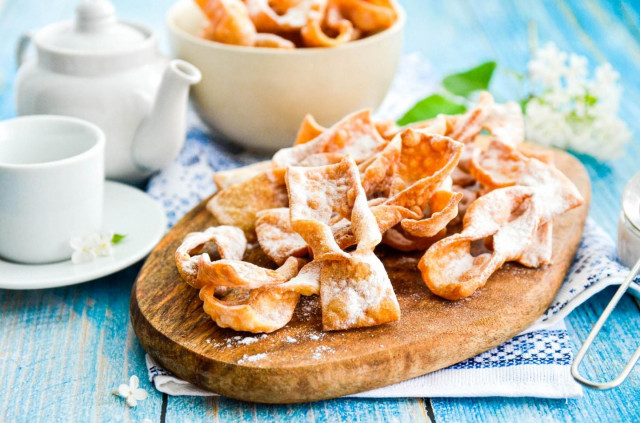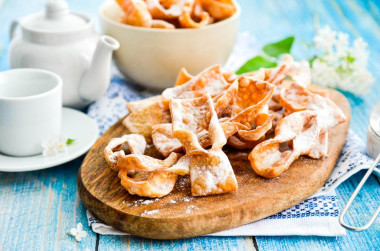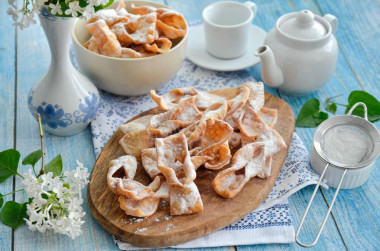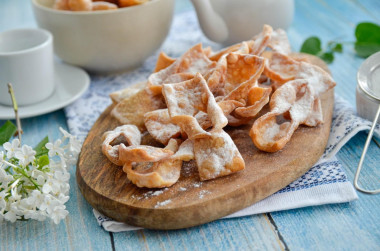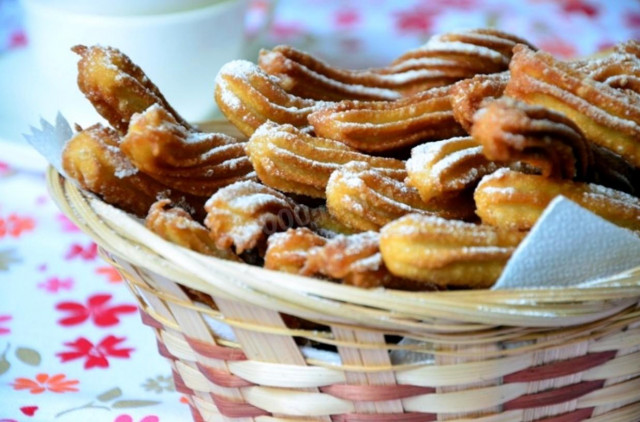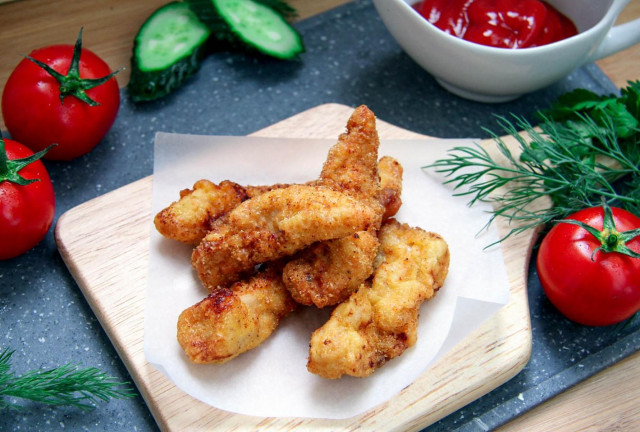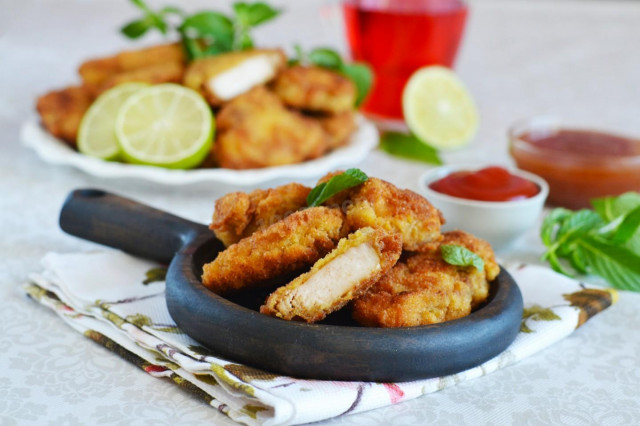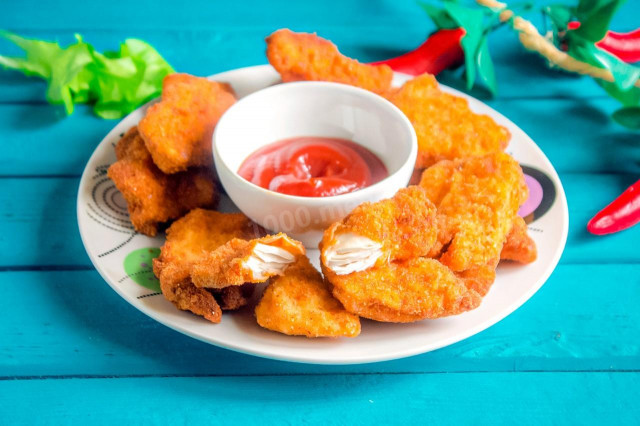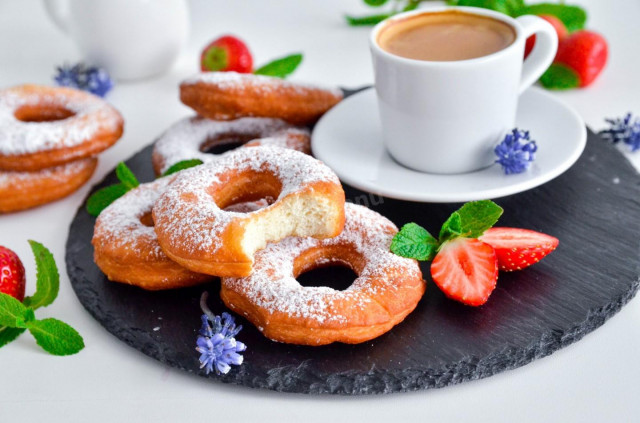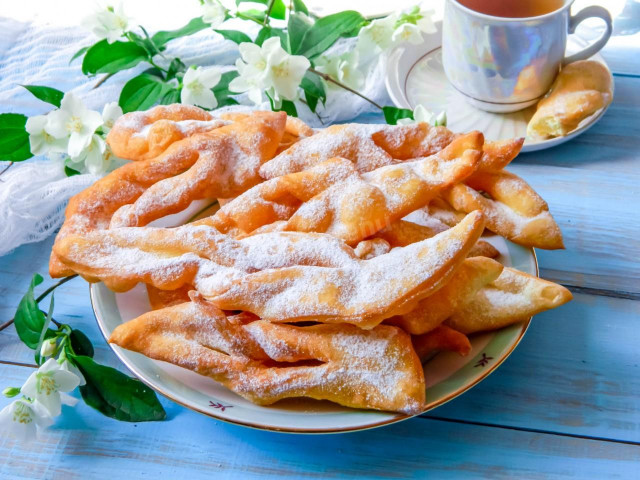Composition / ingredients
Step-by-step cooking
Step 1:
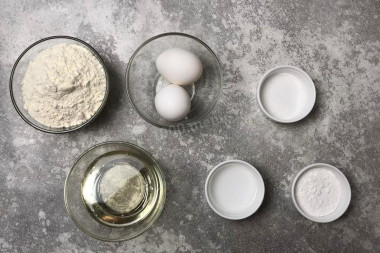
How to make a classic brushwood? Prepare the products for cooking firewood. Flour may take a little more, it all depends on the size of the eggs that you take, and on the flour itself - on its quality, on the humidity of the air, etc. Plus a little flour will go to roll out the dough. The amount of vegetable oil is also approximate. A glass will be needed for a small saucepan. I was frying in a large cauldron, it took me a lot more oil.
Step 2:
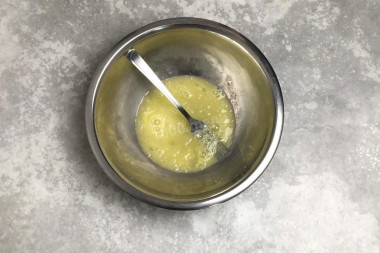
Take a bowl, break the eggs into it. Lightly whisk them with a fork. It is not necessary to take a mixer or a whisk for this purpose - our goal is only to mix the whites and yolks. When stirring, add salt.
Step 3:
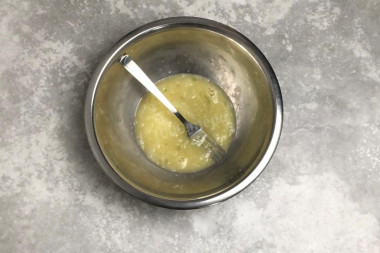
Pour in a spoonful of cold vodka. Mix it up. What is the alcohol in this recipe for? It is due to vodka that the dough gets a lot of bubbles when frying and becomes crispy. Do not be afraid, all the alcohol will wear off from the high temperature, so you can safely give firewood to children.
Step 4:
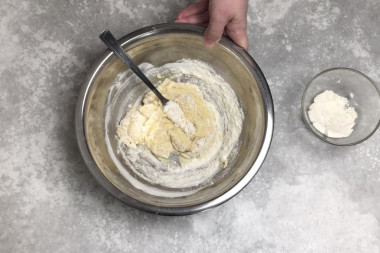
Start pouring flour in portions, stirring the dough with a fork. When the dough becomes thick enough, start kneading with your hands. Some people make dough in a mixer, but believe me, it's much easier and faster to knead it with your hands. It's very easy.
Step 5:
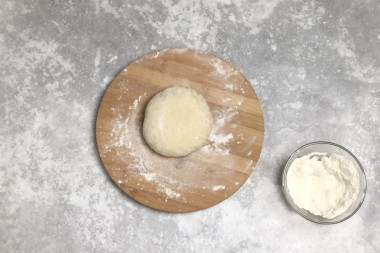
Dust the board with flour, put the dough on it. Knead a smooth dough, for this you will have to add a little more flour. It should become elastic and homogeneous. Well-kneaded dough practically does not stick. Due to the fact that there is no water in this test, the kneading takes place quickly.
Step 6:
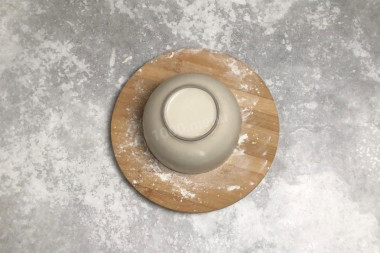
Cover the finished dough with a bowl and leave to stand for 10-15 minutes. During this time, gluten will develop well in it, from which the dough will become very elastic and will roll out well. Do not be afraid that the test is not enough. This amount will make a large bowl of brushwood.
Step 7:
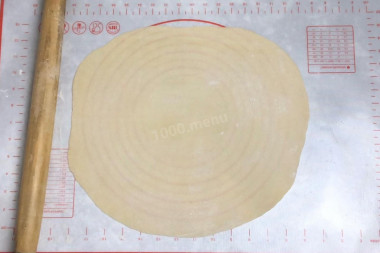
Cut off half of the dough, cover the remaining piece with something so that it does not dry out. Roll out the dough into a thin layer. It should be very thin, literally a millimeter thick, see, I have a translucent pattern on the rug? The thinner the dough, the tastier and crispier the brushwood will turn out.
Step 8:
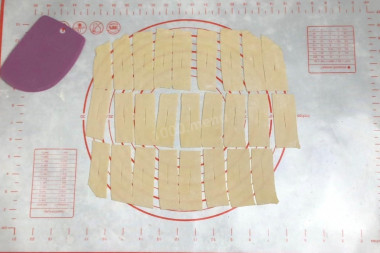
Cut the dough into strips about 2 cm thick. Then cut the strips across to make rectangular blanks. Make an incision in the center of each blank. Do not throw away the waste that is obtained when slicing, they can all be arbitrarily cut and fried.
Step 9:
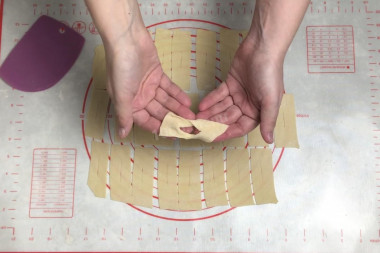
Form a brushwood. To do this, take the blank and turn it out through the cut hole. The video clearly shows how to do this. (This is how the classic Soviet brushwood is made. But you can slice it in a completely arbitrary way. This is not prohibited and not critical) Immediately turn out all the blanks so that they are ready for frying, so it will be more convenient and faster.
Step 10:
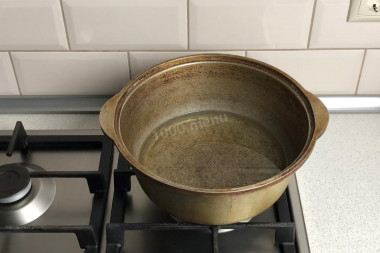
Take a convenient deep-frying dish. I specially take a high cauldron. Maybe it's not quite beautiful, but it turns out to fry in it the best of all. The oil does not splash and warms up very well. Pour the oil. There should be a lot of it, at least 5 cm. Heat the oil over medium heat. How to check that the oil is sufficiently heated? Dip a wooden stick into it, if the oil is sufficiently heated, bubbles will immediately begin to form around it.
Step 11:
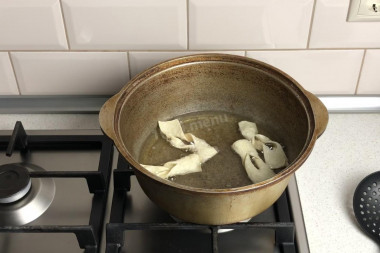
Dip the blanks into the oil. Keep in mind that the brushwood increases very much in size when frying, do not put a lot.
Step 12:
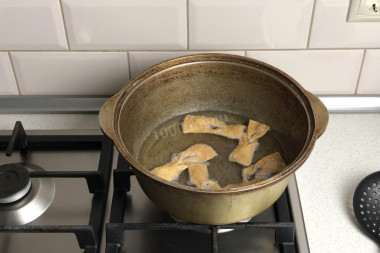
Fry the brushwood, turning it over with a fork, from all sides until golden brown. Make the fire medium, the oil will start to burn on a strong one, and the dough will not fry on a small one.
Step 13:
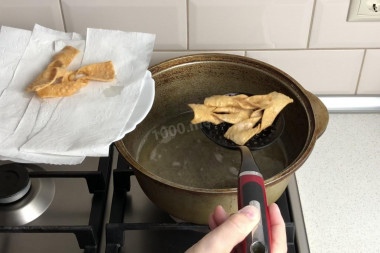
When the brushwood becomes all a beautiful golden color, take it out with a slotted spoon. Prepare a plate with paper napkins in advance. Put brushwood on them to absorb excess fat. Sprinkle the finished brushwood thickly with powdered sugar. In the same way, fry all the brushwood from the first batch, and then make a second one. I rolled and chopped the firewood during the frying process.
Honestly, it was the first time in my life I was frying firewood. And I did it perfectly! I was afraid that I would dirty the whole kitchen, but I didn't even have to wash the stove)
The brushwood itself turned out amazing - thin, crispy, not cloying. It really comes out a lot from such a small bun. Wonderful recipe!
Be prepared for the fact that flour may need more or less than indicated in the recipe. Focus not on the amount of flour, but on the desired consistency of the dough. Read a lot of useful information about flour and its properties in this article!
Use oil with a high smoking temperature for frying! Any oils are useful only until a certain temperature is reached - the point of smoking, at which the oil begins to burn and toxic substances, including carcinogens, are formed in it.
Unrefined oils, with rare exceptions, have a low smoking point. There are a lot of unfiltered organic particles in them, which quickly begin to burn.
Refined oils are more resistant to heating, and their smoking point is higher. If you are going to cook food in the oven, on a frying pan or grill, make sure that you use oil with a high smoking point. The most common of the oils with a high smoking point: refined varieties of sunflower, olive and grape.
Caloric content of the products possible in the composition of the dish
- Chicken egg - 157 kcal/100g
- Egg white - 45 kcal/100g
- Egg powder - 542 kcal/100g
- Egg yolk - 352 kcal/100g
- Ostrich egg - 118 kcal/100g
- Whole durum wheat flour fortified - 333 kcal/100g
- Whole durum wheat flour universal - 364 kcal/100g
- Flour krupchatka - 348 kcal/100g
- Flour - 325 kcal/100g
- Vodka - 235 kcal/100g
- Vegetable oil - 873 kcal/100g
- Salt - 0 kcal/100g
- Powdered sugar - 374 kcal/100g

